Amazing Vintage Photos Of Black Women From Washington, D.C.’s Scurlock Studio

These images from Washington, D.C.’s Scurlock Studio, are a picture of the traditionally black city’s burgeoning middle class. Above: YWCA camp for girls, Highland Beach Girls, 1930. (Smithsonian Institution/National Museum of American History)
In 1900, Addison Scurlock (1883-1964), an African-American photographer, moved D.C. from Fayetteville, North Carolina to apprentice with Moses Rice, a white photographer. Scurlock worked for Rice from 1901 to 1904. Soon after, he started operating a small photo studio out of his home.
By 1911, the studio’s business had grown exponentially and Scurlock began operating out of a storefront studio on U Street, a central location for arts and culture became known as “Black Broadway.”
Nearly a century’s worth of Scurlock photographs combine to form a searing portrait of black Washington in all its guises—its challenges and its victories, its dignity and its determination. Beginning in the early twentieth century and continuing into the 1990s, Addison Scurlock, followed by his sons, Robert and George, used their cameras to document and celebrate a community unique in the world, and a stronghold in the history and culture of the nation’s capital.
Through photographs of formal weddings, elegant cotillions, ballet studios, and quiet family life, the Scurlocks revealed a world in which the black middle class refused to be defined or held captive by discrimination. From its home on the vibrant U Street corridor, the Scurlock Studio gave us indelible images of leaders and luminaries, of high society and working class, of Washingtonians at work and at play. In photograph after photograph, the Scurlocks captured an optimism and resiliency seldom seen in mainstream depictions of segregated society.
h/t: vintag.es

Effie Moore dancers, 1920s. (Smithsonian Institution/National Museum of American History)
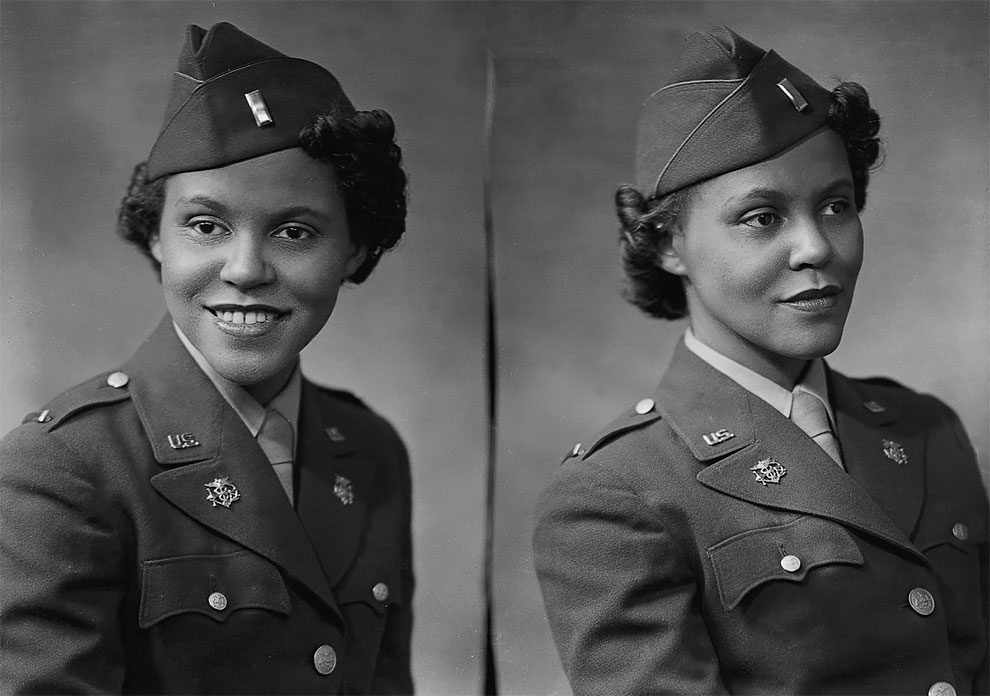
Lt. Alma Jackson. (Smithsonian Institution/National Museum of American History)
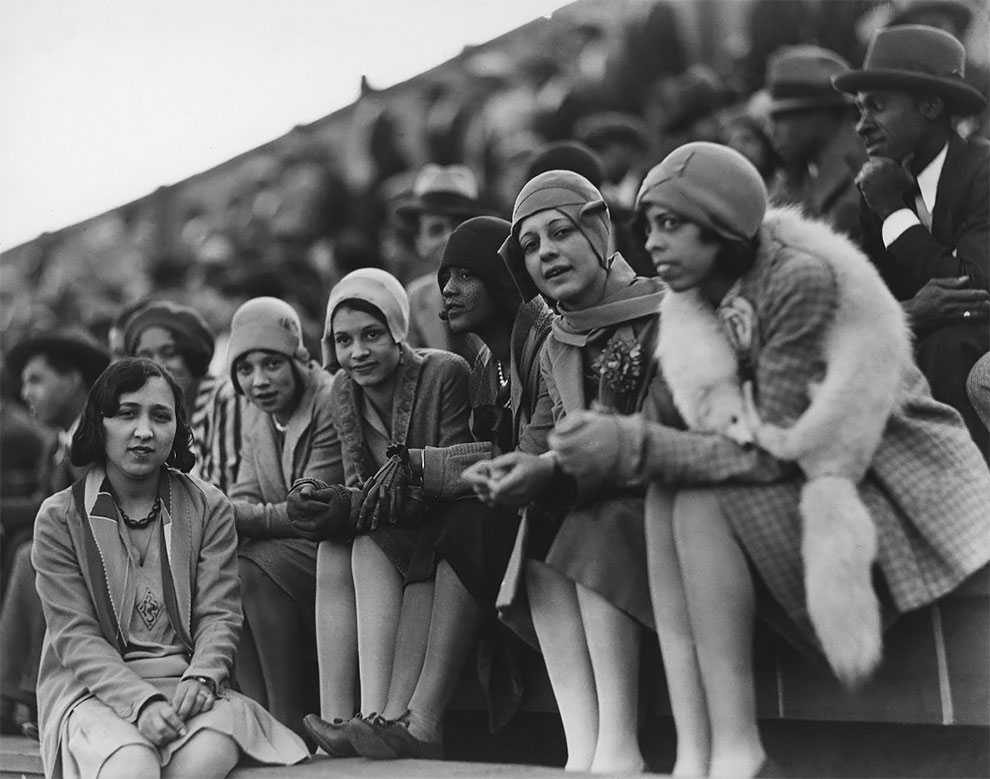
“Flappers” at outdoor sports event, probably a football game at Griffith Stadium, 1920s. (Smithsonian Institution/National Museum of American History)
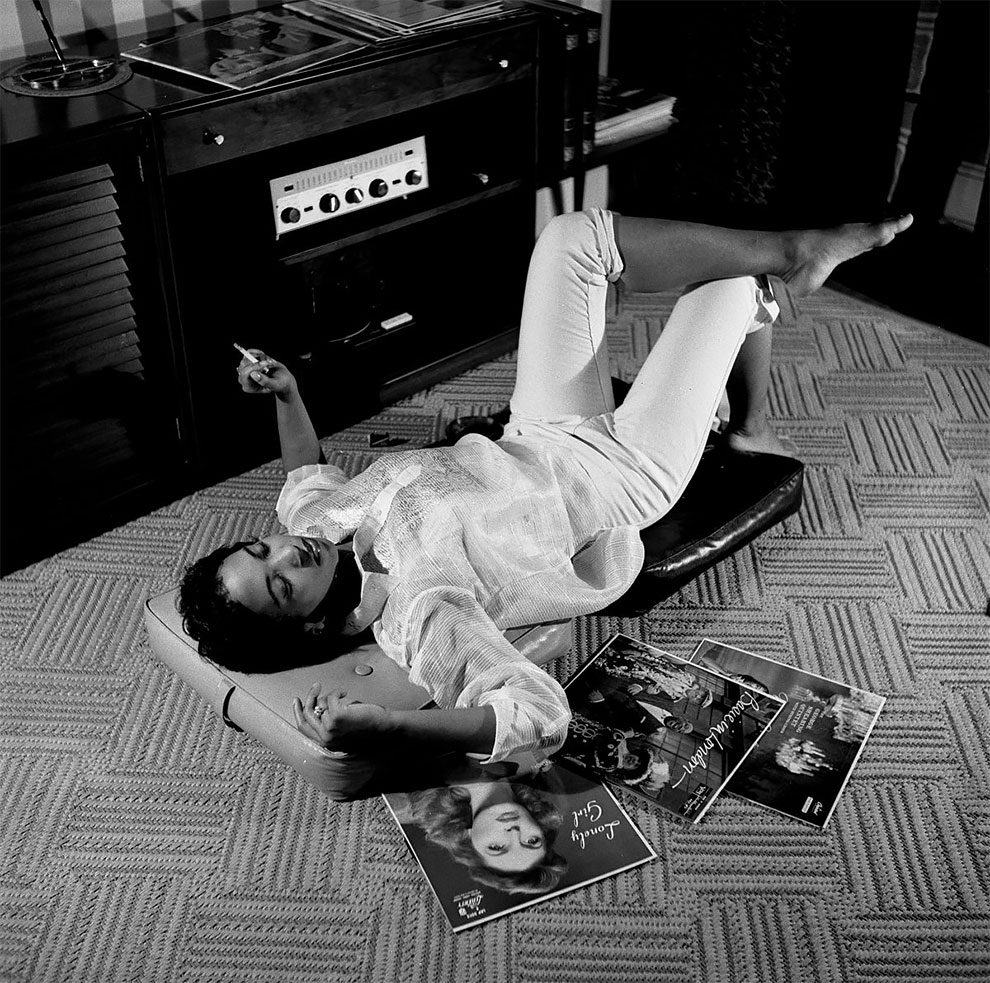
A woman lying down on the floor, smoking cigarette, surrounded by record albums, including “Lonely Girl” by Julie London, released 1956. (Smithsonian Institution/National Museum of American History)
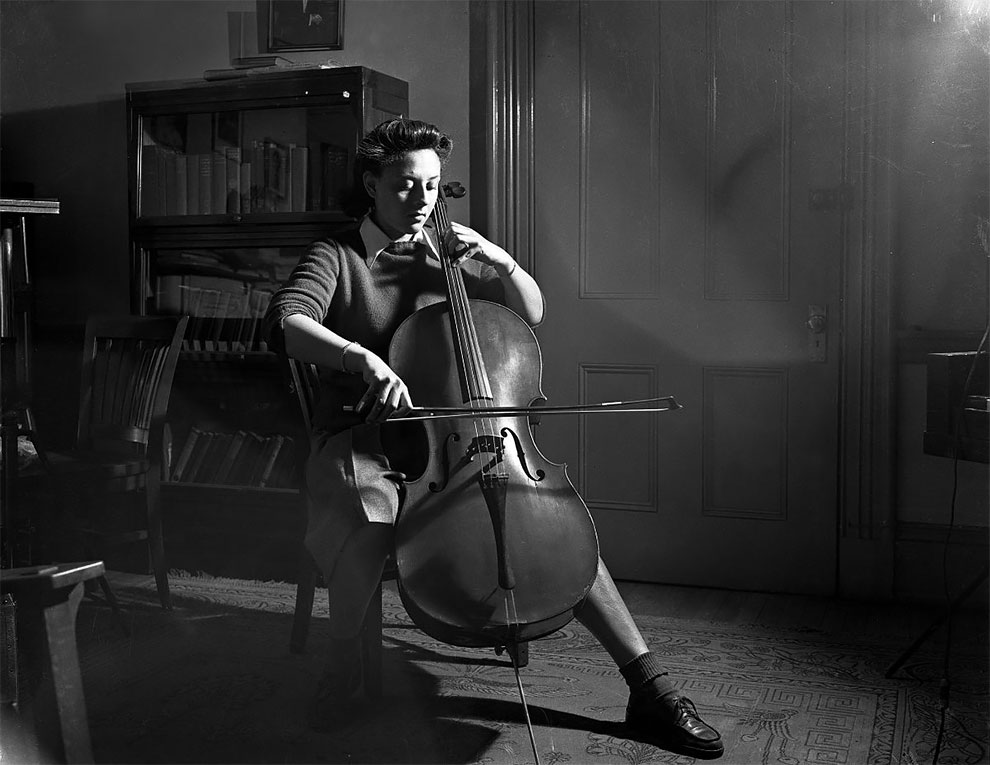
A woman, associated with the Howard University School of Music, playing a cello. (Smithsonian Institution/National Museum of American History)

Woman standing in a kitchen in Eastland Gardens. (Smithsonian Institution/National Museum of American History)
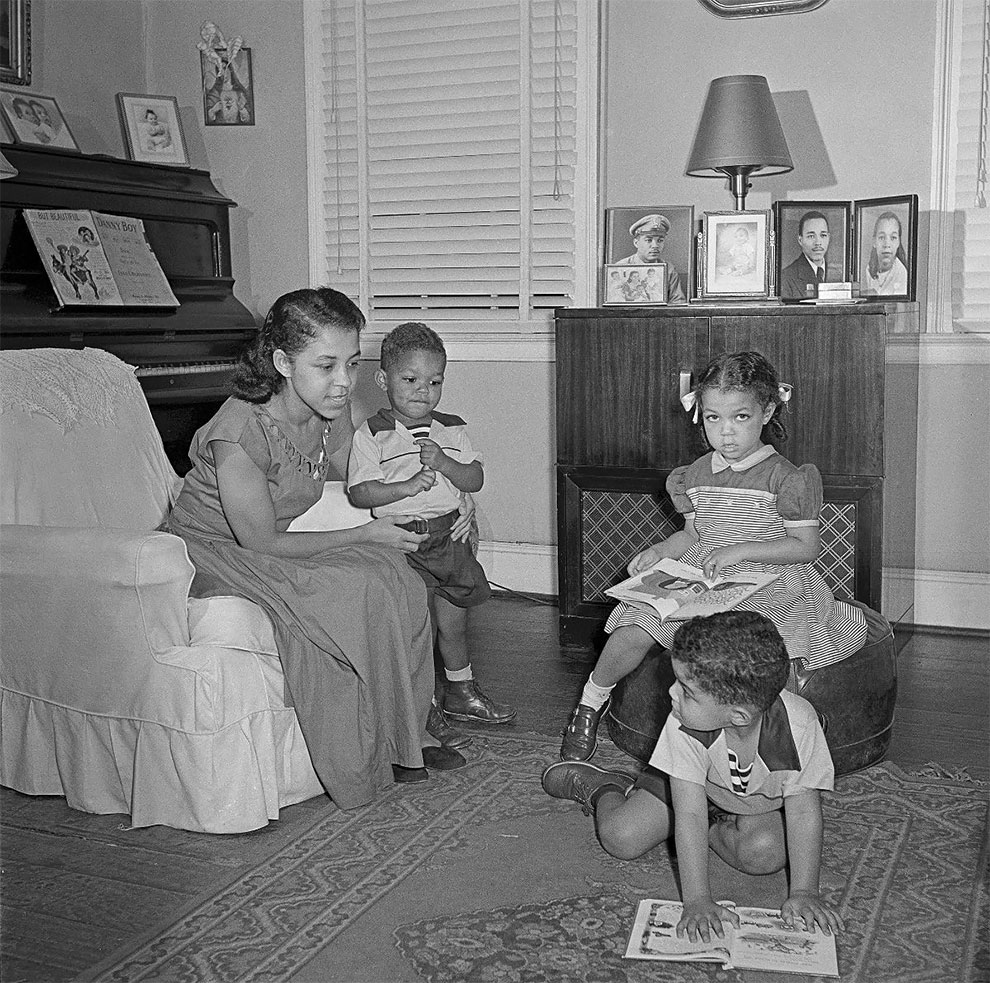
Mother sitting on chair with three children around her, piano to left. (Smithsonian Institution/National Museum of American History)
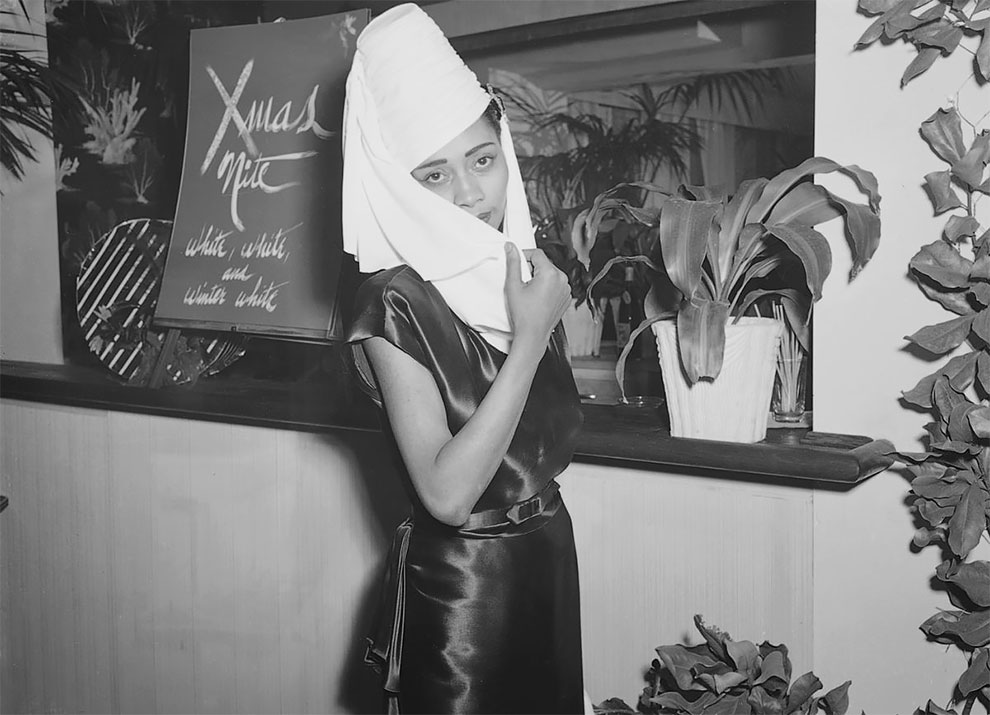
Louise Robins Hat Show, December 1949. (Smithsonian Institution/National Museum of American History)

Nurses feeding chickens participating in Cornell Johnson experiment at Howard University. (Smithsonian Institution/National Museum of American History)
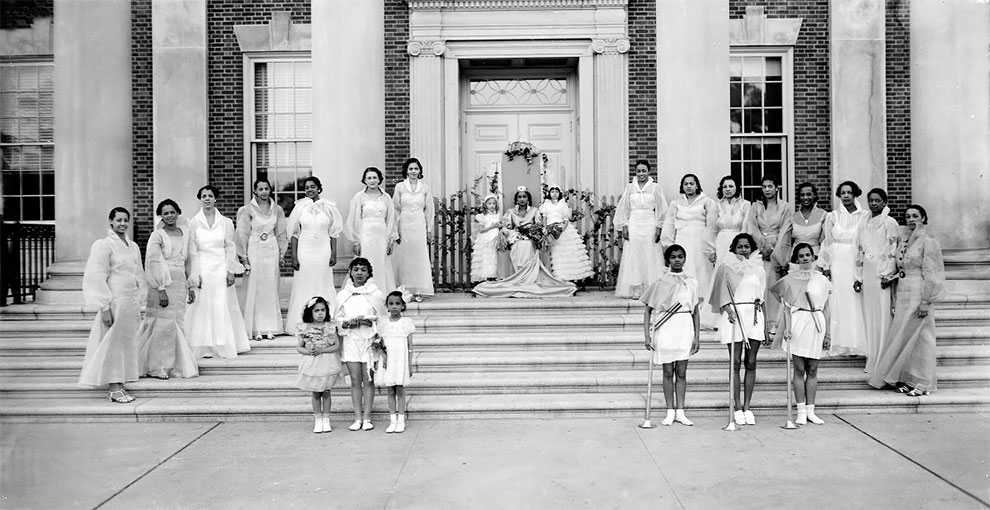
Group of women standing on exterior steps wearing formal dresses. Two groups of three girls stand at the front. The group to the right hold long bugles. At the top of the steps a woman wearing a crown and holding a bouquet of flowers is seated on a throne with two girls standing next to her. Possibly a May Queen or other pageant event. (Smithsonian Institution/National Museum of American History)
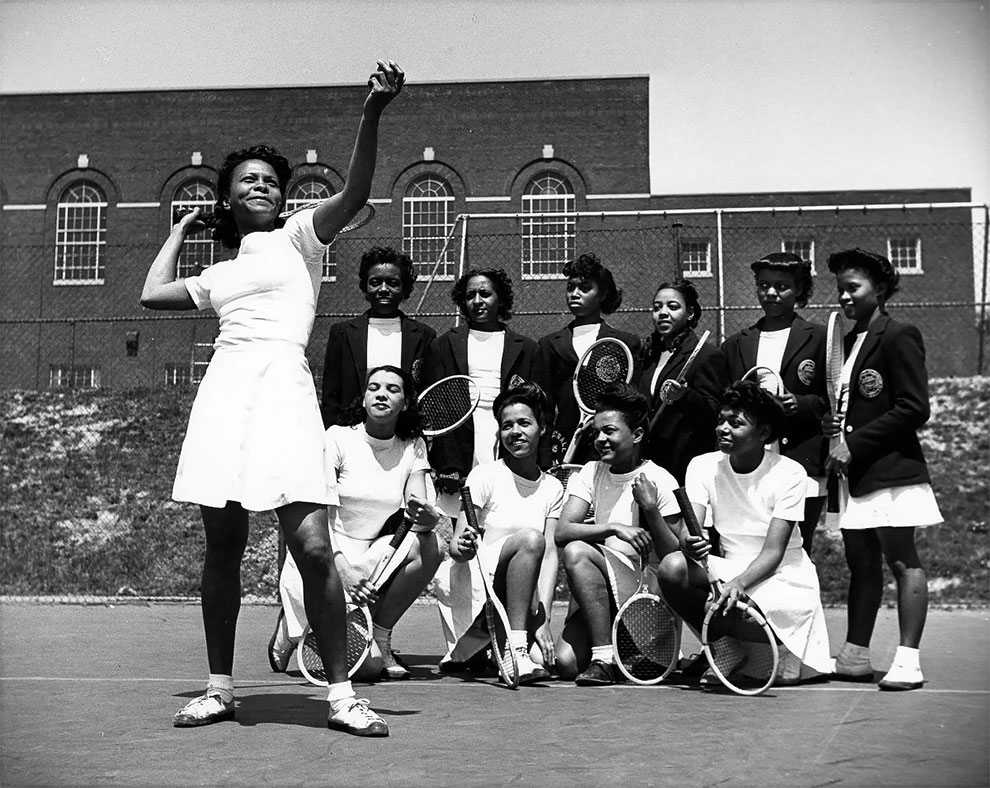
Women’s Tennis Team. (Smithsonian Institution/National Museum of American History)
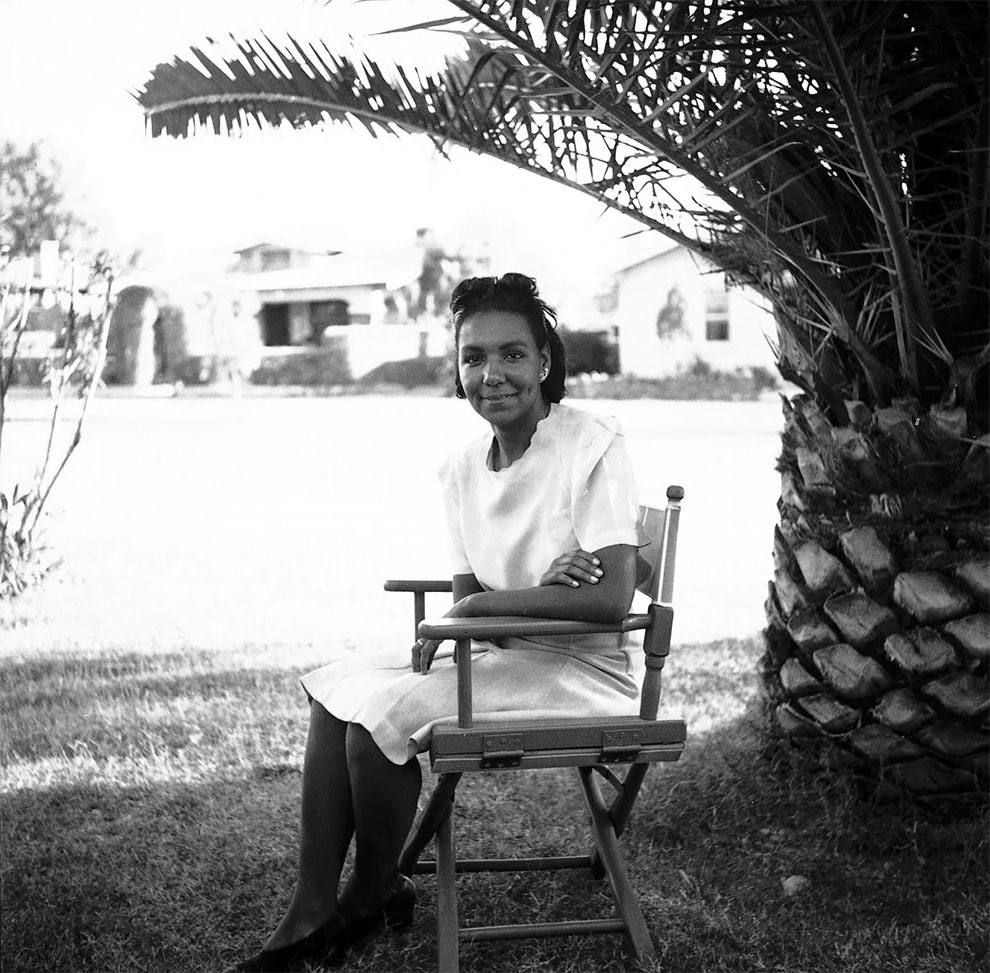
African American woman sitting in a folding chair under a palm tree. (Smithsonian Institution/National Museum of American History)
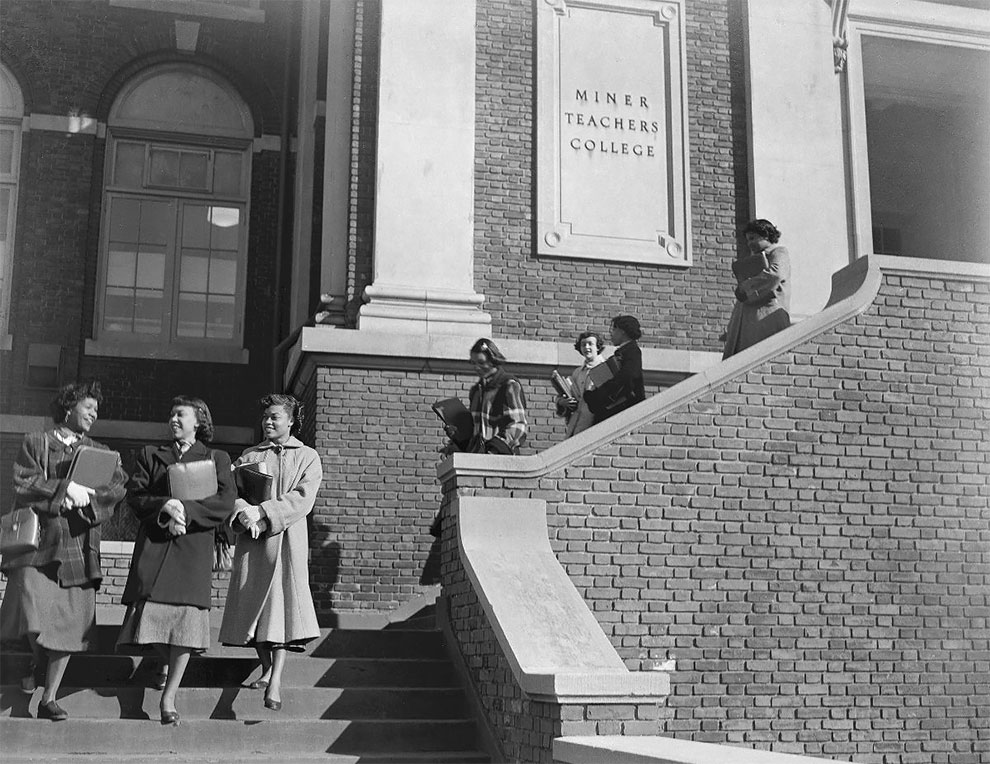
Women walking out of Miner Teacher’s College on Georgia Avenue NW. Alumni included Emma V. Brown, the first African American to teach in D.C public schools, and Major James E. Walker, a World War I veteran. (Smithsonian Institution/National Museum of American History)

Dr. Anna J. Cooper, in her garden, home and patio, 1930. (Smithsonian Institution/National Museum of American History)
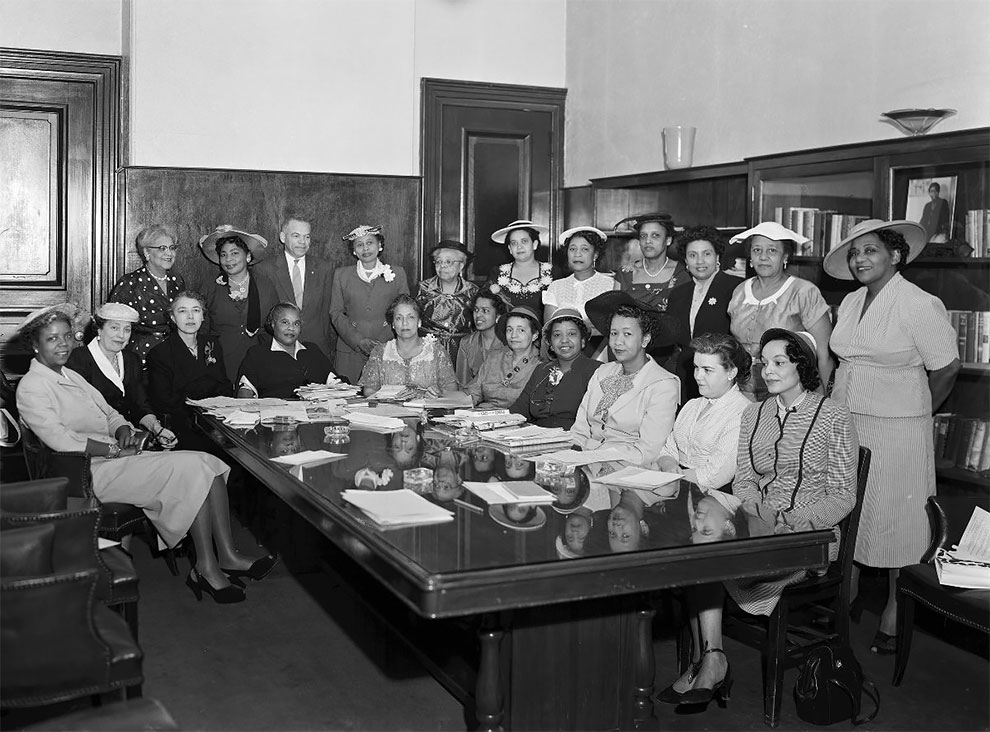
National Council of Negro Women Committee, with Dorothy Height, June 22, 1954. (Smithsonian Institution/National Museum of American History)